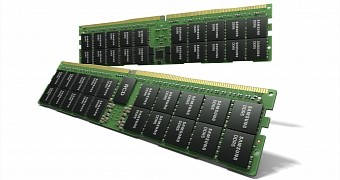While many people know Samsung as the world’s leading phone maker, the South Koreans are investing hard in other hardware too, and this week, they announced another important achievement.
Samsung has built the world’s first 512GB DDR5 module that uses a High-K Metal Gate process technology.
Also known as HKMG, this technology was previously used in logic semiconductors, and it allows for upgraded performance with power reduced by as much as 13 percent. Used since 2018 for Samsung’s GDDR6 memory, the HKMG technology allows the creation of memory modules that are specifically built for high-bandwidth workloads in supercomputers.
And Samsung says it can very well cope with tasks ran by AI and ML, but also for data analytics applications.
“Samsung’s DDR5 will utilize highly advanced HKMG technology that has been traditionally used in logic semiconductors. With continued scaling down of DRAM structures, the insulation layer has thinned, leading to a higher leakage current. By replacing the insulator with HKMG material, Samsung’s DDR5 will be able to reduce the leakage and reach new heights in performance. This new memory will also use approximately 13% less power, making it especially suitable for datacenters where energy efficiency is becoming increasingly critical,” the company explains.
Twice the speed of DDR4
The module uses through-silicon via technology, also known as TSV, to stack a total of eight different 16GB DRAM chips.
“By bringing this type of process innovation to DRAM manufacturing, we are able to offer our customers high-performance, yet energy-efficient memory solutions to power the computers needed for medical research, financial markets, autonomous driving, smart cities and beyond,” Young-Soo Sohn, Vice President of the DRAM Memory Planning/Enabling Group at Samsung Electronics, explains.
The new module increases the performance of DDR4 by more than two times, allowing for transfers of up to 7,200 megabits per second.

 14 DAY TRIAL //
14 DAY TRIAL //